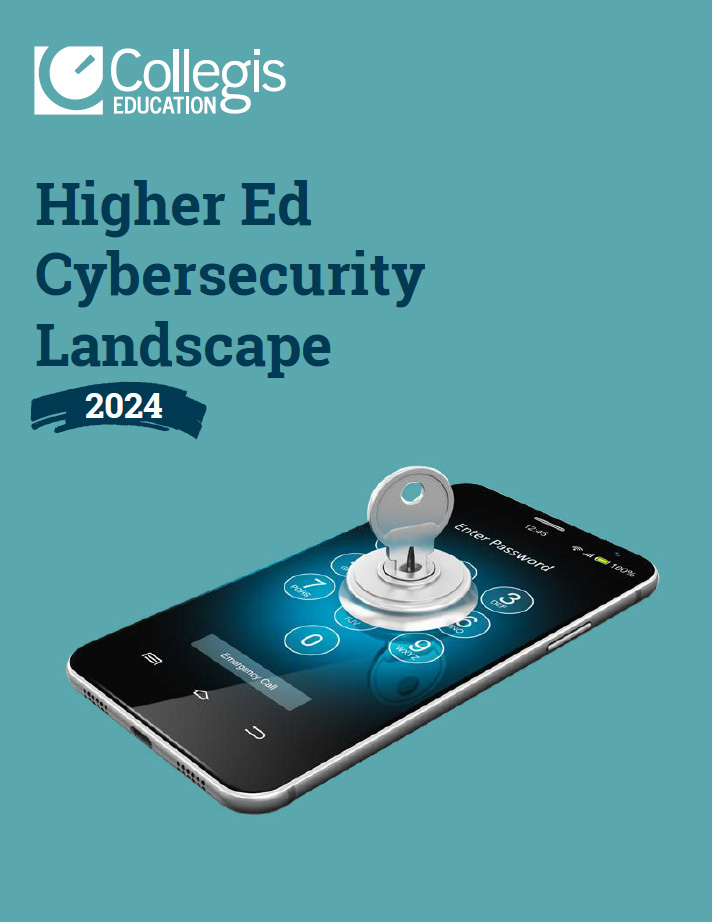In an era where higher education is experiencing increased cyberattacks and smarter cyberthreats, colleges and universities must do all that they can to safeguard sensitive data and ensure the privacy of their constituents. While the evolving cybersecurity landscape may seem daunting, adopting fundamental strategies can significantly bolster your school’s resilience against cyberattacks. As a bonus, schools may experience lower insurance premiums by showing commitment to cybersecurity, implementing comprehensive measures, and complying with relevant regulations.
Here are three basic higher education cybersecurity strategies every institution should prioritize:
1. Stop cybersecurity attacks before they happen: Invest in early threat detection and monitoring
Stopping threats before they occur is the best-case scenario. Threat-detection tools, such as data loss–prevention software, can analyze the security ecosystem and quickly identify malicious activity and enact mitigation efforts. These tools allow institutions to detect threats in real-time and stop breaches before they occur.
The current threat landscape requires tools to monitor and report threats, and protocols need to be in place to respond. Without this, it is only a matter of time before real damage is done.
2. Empower your staff and students: Provide cybersecurity education and training
Education is a powerful and essential to counteract cyberthreats. Enable students and staff to recognize, avoid and report an attack by offering regular awareness training that promotes cybersecurity best practices for schools. They should be made aware of common cyberattacks, such as:
- Ransomware Attack
Paralyzing a victim’s systems or threatening to steal, block or publish a victim’s data unless a ransom is paid. - Business Email Compromise (BEC)
Emails that impersonate senior leadership and ask for tasks to be carried out that would reveal sensitive information or transfer funds. - Phishing
Using electronic communications to deceive and take advantage of users, often beginning with an email attempting to obtain sensitive information by persuading a user to click on a malicious link or download an infected attachment. - Spear Phishing
Infiltrating an organization to steal sensitive information through a targeted type of phishing. Attackers will often gather personal information about their victims via social media profiles to write emails with more authentic context. - Spoofing
Committing malicious acts by disguising oneself as a person, business or entity the victim is familiar with to get them to freely provide information.
Students and staff should also be educated in proper data-handling practices and physical security measures for various technologies. By creating a culture that values cybersecurity, schools can empower active contributions to defend against cyberthreats.
“The most significant new risk in higher ed is the bad guys’ use of AI to develop and launch more targeted and believable phishing campaigns. Phishing is still a top method of compromising users, but with the added power of AI, it can be easier, quicker, and more effective than ever. User training has to shift to meet the challenge,” said Nairn.
3. Safeguard your data: Establish a comprehensive security policy
The recent changes to the Gramm-Leach-Bliley Act’s safeguard rules require universities and colleges to take a proactive approach to student financial record-keeping and cybersecurity. Remaining compliant with these regulations and reporting requirements is essential to securing funding. That begins with a well-documented IT security policy that sets standards of behavior for the digital activities of faculty, staff, and students.
Your policy should define common cyberattacks, outline systems to guard data, assign roles and responsibilities, and be regularly updated as new regulations and threats emerge. Artificial intelligence (AI), though somewhat underdeveloped, should have a place in your IT security policy that outlines how to reduce the cybersecurity risks of AI, such as avoiding sharing sensitive data with AI and building a strong AI incident-response procedure.
Preventive strategies are key
Don’t wait for a data breach to implement yours. Begin enhancing your school’s cybersecurity plans with the help of our ebook, “2024 Higher Ed Cybersecurity Landscape,” including:
- Why higher ed is a target for cyberattacks
- Notable updates to GLBA requirements
- A checklist to reduce the risks of AI chatbots and generative AI
Collegis can also help with a cybersecurity risk assessment. Contact us to learn more.
Author: Collegis Education Staff
Collegis is passionate about education and driven by the technology that keeps institutions moving forward.





